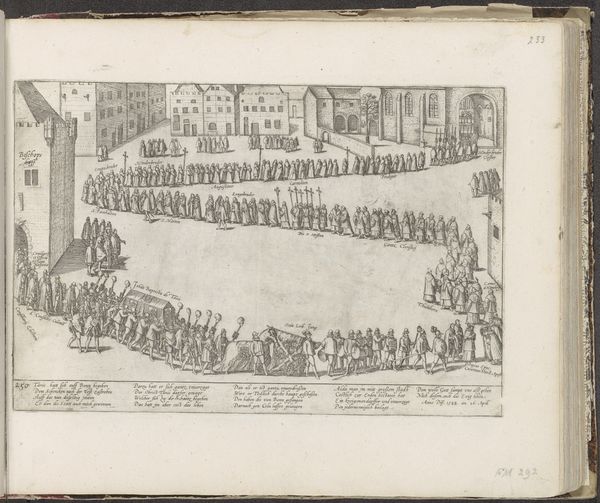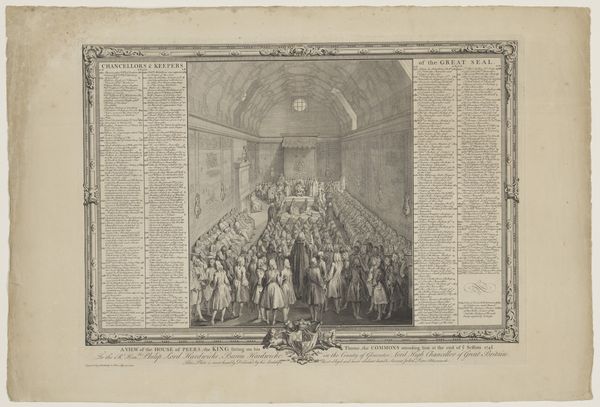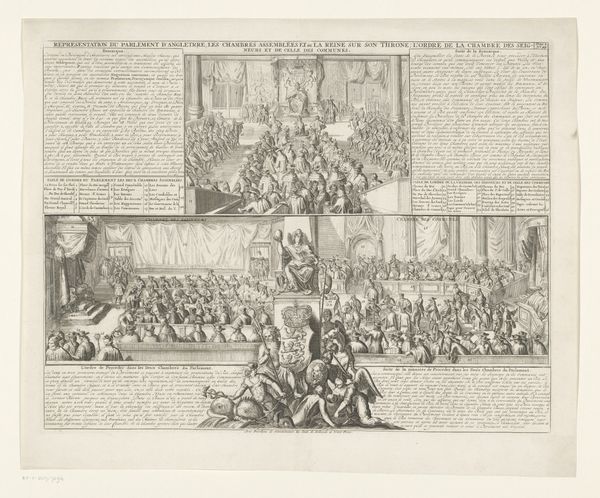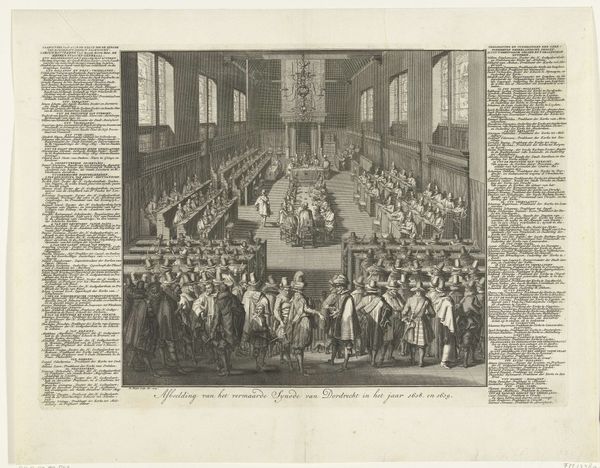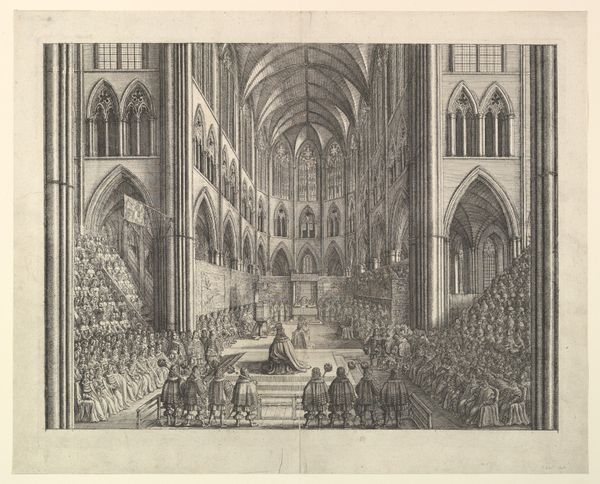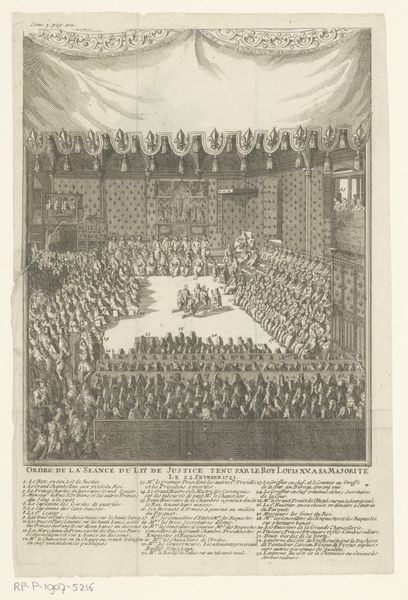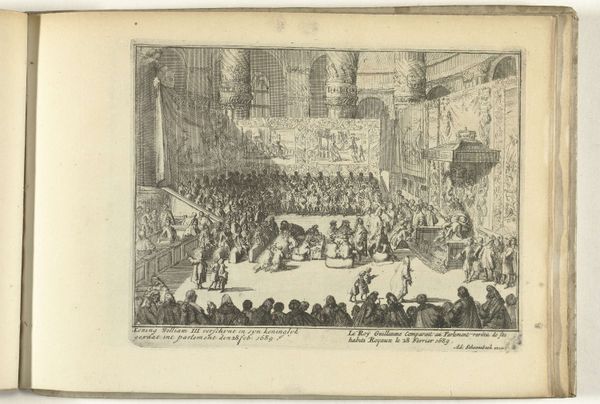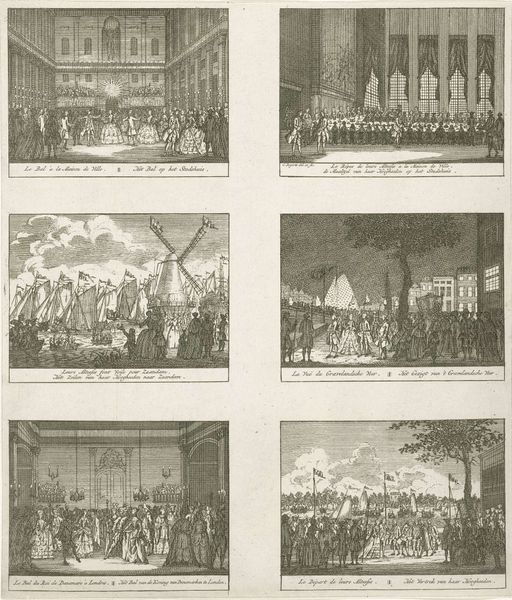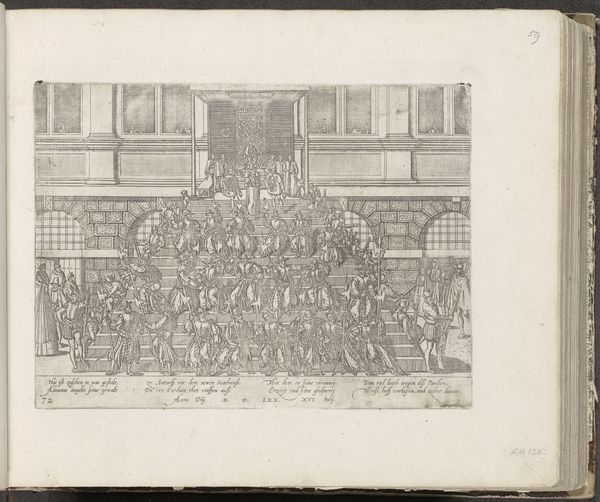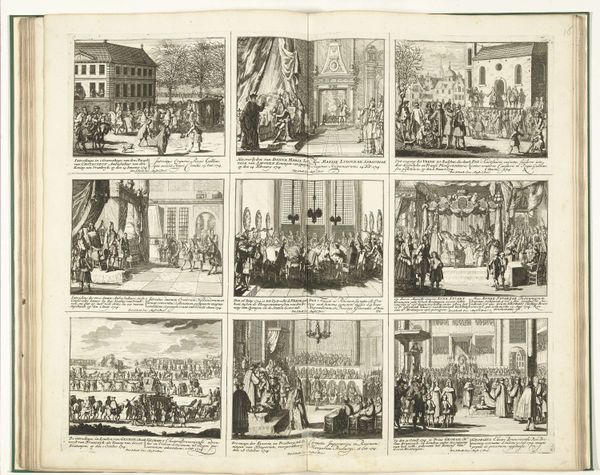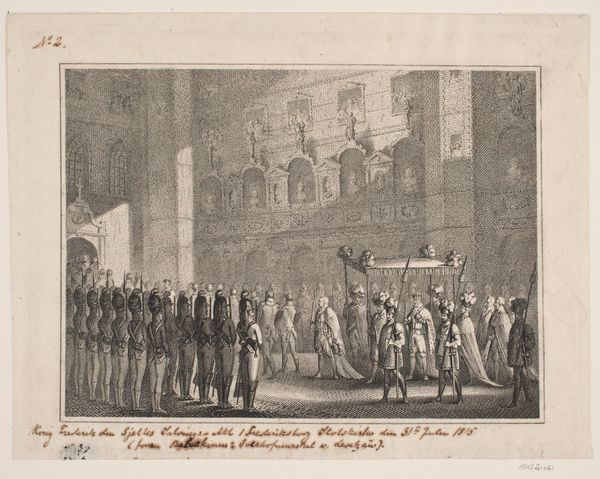
Kroning van de koning in Reims / 'Lit de justice' door de jonge koning Lodewijk XIV in 1651 1650 - 1750
0:00
0:00
print, engraving
#
baroque
# print
#
figuration
#
line
#
cityscape
#
history-painting
#
engraving
Dimensions: height 205 mm, width 510 mm
Copyright: Rijks Museum: Open Domain
Curator: The initial feeling this evokes for me is one of vast halls and figures arranged with extreme order, it’s like observing rituals laid out with intention. Editor: Indeed. Here we have a fascinating engraving by J. Smit dating roughly from 1650 to 1750. It's titled 'Coronation of the King in Reims / 'Lit de justice' by the young King Louis XIV in 1651.' Two scenes captured, the coronation on one side, a royal session of justice, a "Lit de Justice," on the other, all rendered with this incredibly precise line work typical of the baroque era. Curator: Baroque, yes, it certainly screams baroque. That feeling of opulent authority and performance—but I also feel how removed we are from the human story with that aerial perspective, almost god-like. The repetitive shapes, the formal poses, and all that pattern – like wallpaper made of people. Editor: Exactly! That's where the iconography gets interesting. Look at how the artist meticulously renders every figure, seemingly identical yet implying individual roles within the grand theatre of the state. What you’re calling 'wallpaper' is a symbolic display of power through visual uniformity, almost erasing the individual in favor of the collective. The sheer density serves to reinforce that, don’t you think? Curator: It also feels unsettling, this almost robotic presentation. The absence of genuine expression perhaps tells a more complicated story about absolute power… a forced conformity… Even in an idealized portrayal, there's something unsettling about the uniformity. I wonder about the story it conceals, a disconnect from individual liberty. Editor: Precisely. These images were very strategic; they served as a kind of cultural branding, if you will. Visuals had profound implications. In a period of volatile political tensions and the consolidation of monarchic power, such engravings presented not just a record but an argument – an idealised version of control. We see similar patterns emerging in other visual materials from that era, too. Curator: Looking again, I recognize that beneath all the political intent, and beneath my discomfort, lies compelling artistic skill and visual precision; I appreciate seeing history portrayed through the rigorous lens of this type of work. It challenges me. Editor: Agreed. A layered representation with so many interesting levels to engage with and to unpack further. A fascinating snapshot into history, indeed.
Comments
No comments
Be the first to comment and join the conversation on the ultimate creative platform.


